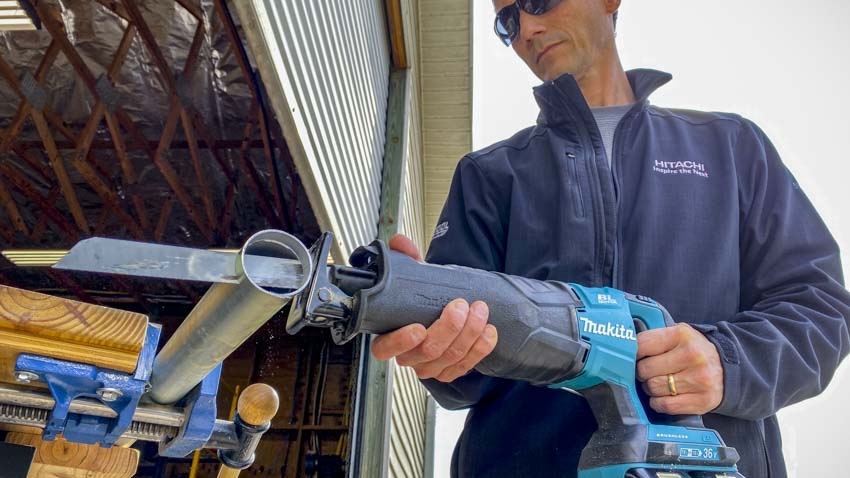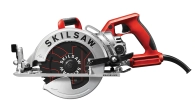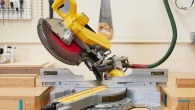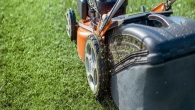
The Reciprocating Saw: A Cutting Edge for Diverse Projects
The reciprocating saw, often nicknamed a Sawzall (after a popular brand name), is a workhorse in the toolbox of any DIY enthusiast, professional contractor, or demolition crew. Unlike circular saws or jigsaws, which excel at making precise cuts in wood, the reciprocating saw prioritizes brute force and versatility. So, what exactly is a reciprocating saw, and why should you consider adding one to your arsenal?
Built for Demolishing and Cutting Through Tough Materials
At its core, a reciprocating saw is a powerhouse of cutting action. The defining feature is the long, thin blade that rapidly thrusts forward and backward, resembling a sawing motion. This reciprocating motion allows the saw to tackle a wider range of materials compared to its more specialized saw counterparts. Wood, metal, plastic, and even some masonry can be cut with the right blade selection.
This versatility makes reciprocating saws ideal for demolition projects. Need to break through drywall or plywood for renovation? A reciprocating saw makes quick work of it. Likewise, if you’re removing old pipes or conduit, this saw can effortlessly cut through them. When tight spaces or awkward angles hinder the use of other saws, the reciprocating saw shines with its ability to make plunge cuts – initiating a cut in the middle of the material.

Beyond Demolition: Exploring the Reciprocating Saw’s Applications
While demolition might be the reciprocating saw’s most celebrated role, its usefulness extends far beyond tearing things down. Here are some other common applications:
-
Landscaping: Trimming thick tree branches, cutting through roots, or even sectioning firewood become manageable tasks with a reciprocating saw.
-
Plumbing and Electrical Work: During plumbing or electrical projects, a reciprocating saw can efficiently cut through pipes, conduit, and even nails embedded in wood.
-
Rough Carpentry: Reciprocating saws can be used for rough cuts in lumber, particularly when precision isn’t a major concern.
-
Salvaging Materials: Disassembling old furniture or rescuing usable lumber from demolition projects is a breeze with this handy tool.

Choosing the Right Reciprocating Saw for the Job
With the variety of reciprocating saws available, selecting the right one depends on your needs and budget. Here are some key factors to consider:
-
Corded vs. Cordless: Corded reciprocating saws offer continuous power, ideal for extended use. Cordless models provide portability and convenience, but battery life can be a limiting factor.
-
Power: Measured in amps, a reciprocating saw’s power directly impacts its cutting ability. Higher amperage saws are better suited for tougher materials.
-
Stroke Length: The stroke length determines the cutting depth in one pass. Longer strokes allow for deeper cuts but can reduce maneuverability.
-
Variable Speed: This feature allows for better control when working with different materials. Slower speeds are ideal for delicate cuts, while higher speeds power through tougher materials.
-
Blade Change Mechanism: Look for a saw with a tool-less blade change system for faster and more convenient blade swaps.

Safety First: Essential Tips for Using a Reciprocating Saw
The reciprocating saw’s power demands respect. Here are some safety precautions to remember:
-
Wear safety glasses and gloves: Eye protection is crucial to prevent flying debris, and gloves protect your hands from cuts and vibrations.
-
Maintain a firm grip: The saw’s forceful reciprocating motion can cause it to buck if not held securely.
-
Use the correct blade: Different materials require specific blade types. Ensure the blade is sharp and securely fastened.
-
Be mindful of your surroundings: Keep your body and bystanders out of the cutting path to avoid accidental injuries.
-
Unplug the corded saw or remove the battery before changing blades.

Lubrication of moving parts
In the world of machines, friction is the enemy. It’s the force that resists movement between two surfaces, causing wear and tear. That’s where lubrication comes in – it’s the hero that minimizes friction, allowing parts to move smoothly and efficiently.
The Magic of Lubrication
Lubricants are substances, typically oils or greases, that are applied between moving surfaces. Here’s how they work their magic:
- Reducing Friction: Lubricants form a thin layer between surfaces, separating them slightly. This reduces the direct contact, minimizing the force needed to overcome friction.
- Preventing Wear: By reducing friction, lubricants decrease the wear and tear on moving parts. This extends the lifespan of your machine and saves you money on repairs.
- Dissipating Heat: Friction generates heat, which can damage components. Lubricants help absorb and transfer heat away, keeping things cool.
- Protecting from Corrosion: Some lubricants contain additives that fight against rust and corrosion, further protecting your machine.
Choosing the Right Lubricant
There’s no one-size-fits-all solution when it comes to lubrication. Different types of machines and moving parts require specific lubricants to function optimally. Here are some key factors to consider:
- Viscosity: This refers to a lubricant’s thickness. Thicker greases are better for high-pressure applications, while thinner oils work well for high-speed parts.
- Temperature Range: Lubricants have operating temperature ranges. Choose one that can withstand the temperature fluctuations your machine experiences.
- Load Capacity: The load a machine puts on its parts determines the lubricant’s load capacity needs. Heavier loads require lubricants designed to handle the pressure.
Applying Lubrication Wisely
Once you’ve chosen the right lubricant, proper application is crucial. Here are some general tips:
- Consult your machine’s manual: It will specify recommended lubricants and application points.
- Clean the area: Dirt and debris can act as abrasives, so clean the area around lubrication points before applying.
- Apply the correct amount: Too little lubricant won’t be effective, while too much can create a mess and attract dirt. Refer to the manufacturer’s instructions.
- Schedule regular lubrication: Lubricants degrade over time, so reapplication is necessary. The frequency depends on your machine’s usage and the lubricant type.
The Bottom Line: Lubrication is Key to a Healthy Machine
By understanding the importance of lubrication and applying it correctly, you can ensure your machines function smoothly, efficiently, and last longer. It’s a simple yet powerful way to keep your tools and equipment in top shape.

The Reciprocating Saw: A Versatile Powerhouse for Your Toolbox
The reciprocating saw is a valuable addition to any toolbox. Its ability to tackle demolition projects, handle various materials, and make plunge cuts makes it a true problem-solver. By understanding its applications, choosing the right saw for your needs, and prioritizing safety, you can unlock the full potential of this versatile powerhouse. So, next time you face a cutting challenge that demands muscle and adaptability, consider reaching for the reciprocating saw – it might just be the hero your project needs.












Leave a Reply